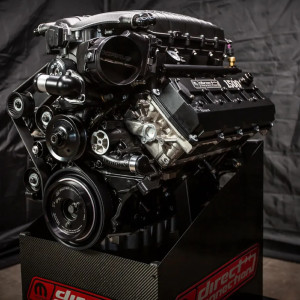America unveils the $6 Billion engine of the future – No hydrogen, no ammonia, no electric


The hydrogen industry is advancing, with Japan as the global epicenter, and China disputes our leadership in the EVs sector. However, America has just introduced the ultimate engine that outperforms all known fuels, including all zero-emission vehicles (ZEVs). Some have defined it as "the eco version of a polluting gas" or as "an improved version of alcohol", but it goes far beyond that: we tell you all the details about the project that is going to change everything.
America has unveiled the "engine of the future": No hydrogen, no ammonia, no electric
The world's largest carmaker, Stellantis, operating under the 14 brands, which include Fiat, Peugeot, and Jeep - has, in a recent statement, revealed it will invest £6 billion into the South American market to build a generation of motors capable of running on either gasoline or ethanol.
This entailed investment is considered the largest of its kind in the region for automotive, and will effectively underwrite choice for more than forty new products and introduce a new line of "Bio-Hybrid" technologies, which combine electric and ethanol technology. The most important part of the investment plan for Stellantis is the flex-fuel kind of internal combustion engines vehicles that are designed to use a blend of gasoline and ethanol. These engines can be designed in such a way that they can switch between the two fuels at will.
This fuel comes from Brazil, but America has developed it: A new engine to revolutionize the world
The new flex-fuel engines that Stellantis is to unveil will also have a hybrid plug-in hybrid added, therefore making a unique combination of the flexibility of the combustion engine, an electric motor, and a battery.
This "Peugeot e-THP Bio-Hybrid" strategy's objective appears to be to offer consumers the benefits of flex fuels. Ethanol, a renewable fuel produced from agricultural crops such as sugarcane and corn, has been applied as a gasoline blend or as a stand-alone fuel in many regions of the world, especially Brazil. Ethanol is a better fuel than gasoline, hence, it is commonly incorporated in the standard blend due to its environmentally friendly nature since it generates less carbon during burning.
The investment in ethanol-powered engines as made by Stellantis as a means of exploiting the ethanol usage.
Stellantis' plans, in detail: The first ethanol engines to be developed
Flex-fuel vehicles that can burn a mixture of gasoline and ethanol have been available for years, but the Stellantis' new generation engines should be more efficient. According to the company, the new Bio-Hybrid engines will offer a range of powertrain options, including:
- Bio-Hybrid: Integrates an internal combustion engine (involving a petrol detonation engine) with electrical drive.
- Bio-Hybrid eDCT: Equipped with a bio-hybrid powertrain with an electric dual clutch.
- Bio-Hybrid Plug-In: An accessory that is plugged into the car for recharging, which can also be drawn from the mains.
The termed power train configurations are said to be even more efficient in terms of fuel consumption and emissions than the conventional combustion engines, although they are still accompanied by the corresponding versatility and power needed by customers. Out of the total capital expenditure of £300 billion, £6 billion has been planned for South America to be invested.
What could be the first ethanol engine in history will be a step forward that will make it difficult for hydrogen (FCEVs) to advance.
In fact, it is a breakthrough that Stellantis already announced several years ago, but that has now come to fruition, with America playing a leading role in the research of this fuel.
We could even be talking about an improved version of methanol engines (don't confuse the terms) and one that reduces emissions.